Threatened by haphazard development and a growing water crisis, Nepal’s ancient water management system is drying up.
The few stone spouts that are still functional provide respite for many locals who still depend on them for their water needs. Elite Joshi/TKP
Chase Brush
Om Shrestha remembers when the gold-plated stone spout near his home in Patan Durbar Square flowed round the year with water so clear you could drink it straight from the tap. As a child, he would visit the fountains morning and night, using them to bathe, brush his teeth, and collect water for his family for cooking and cleaning. Even in the winter, when water was otherwise scarce in his predominantly Newar neighbourhood, Shrestha would be amazed to find crystalline water still pouring forth from the shiny mouths of the crocodilian motifs that adorned the spouts.
“That’s how it was back then,” said Shrestha, who is now 45 and runs a guesthouse nearby. “We could take a shower, drink from it, do everything, and there was never any shortage.”That was over 25 years ago, and today, the same spout—one of the most revered in the city, called Sundhara—sits idle for all but a handful of weeks every year. Only during the heavy rains does water make its way back out of the mouths of the crocodiles, and even then, it’s often only a trickle. And while residents still flock to collect water when it runs, Shrestha says, many in the immediate community have come to rely on other sources for their daily supply, including household faucets, local wells, or private and government tankers that have become ubiquitous in the neighbourhood.
Sundhara is one of Patan’s oldest dhungedhara, or hiti as it is called in Nepal Bhasa. Scattered across all four historic cities in the Kathmandu Valley, and fed by local ponds and aquifers both far and near, these stone spouts are part of an ancient water management system that has persisted here for centuries, providing valley residents with fresh water. To this day, nearly 20 percent of the Valley’s population relies on spouts for some of their water supply, according to the Central Bureau of Statistics; the number is likely higher in neighbourhoods like Shrestha’s, where residents can still be seen queued up at their local hitis, waiting to collect water for daily chores and errands. And yet Sundhara, like so many other spouts across the Kathmandu Valley, is drying up. As a booming population continues to strain the region’s natural water sources, and as overdevelopment encroaches on the hidden infrastructure that enables the system to function, the spouts are increasingly under threat of extinction, according to heritage activists and water conservationists. A report by the Kathmandu Valley Water Supply Management Board this summer found that almost a sixth of the total number of hitisbelieved to exist in the Valley have dried up or disappeared completely, while more than half were without running water at the time of the survey.
It’s an extinction that’s been in the making for decades now, but experts and activists say it has accelerated in recent years, exacerbated by neglect and a growing water crisis. It’s also spurring many concerned observers— both those committed to preserving the Valley’s cultural heritage, as well as those who see in the spouts part of a solution to its water problems—into action. “In the Kathmandu Valley, many people are interested in stone spouts,” said Pushkar Shrestha, executive director of the Center for Integrated Urban Development. “Many people want to conserve them and wish to see water flowing from them. But in my view, people are not focusing their efforts in the right areas.”

Sundhara's water flow was being siphoned off by a nearby industrial estate, reducing its flow to a trickle. Chase Brush/TKP
Tangible and intangible heritage
Historians estimate that there were once over 600 stone spouts in the Kathmandu Valley, with many that still exist today dating as far back as the Lichchhavi and Malla periods. But according to Sudarshan Raj Tiwari, a retired professor of architecture at Tribhuvan University who has studied the history of stone spouts in the Valley, the system itself likely traces its roots back even earlier: to the Kirat Kingdom, when early inhabitants began building an elaborate network of ponds, reservoirs, and underground conduits to store and transport water throughout the region. Such technology would have been particularly useful in Nepal’s monsoon climate, Tiwari said. The ponds, positioned at high elevations throughout the region, helped collect rainwater in the summer, allowing it to slowly replenish groundwater the rest of the year. The canals, powered by gravity, helped supply water to areas with a scarcity.
Later eras saw the system further developed. State canals, or rajkulos, were installed in several places to link local aquifers and ponds with water sources outside the city, or to directly feed spouts with ritual or royal purposes. Sophisticated charcoal and sand filtration mechanisms were also developed to help purify the water of debris and sediment. At the other end of the process, drainage conduits emptied the runoff into irrigation canals, where it watered agriculture fields and eventually made its way back into the ground. “The typical character of the monsoon is that it rains for two months,” Tiwari said. “So you have to figure out how to hold on to that water for the rest of the year. Of course, nature holds on to some extent. But our ancestors knew that nature has a limit, and so they must have learned to figure out all these intricacies for preserving water during the dry season.”
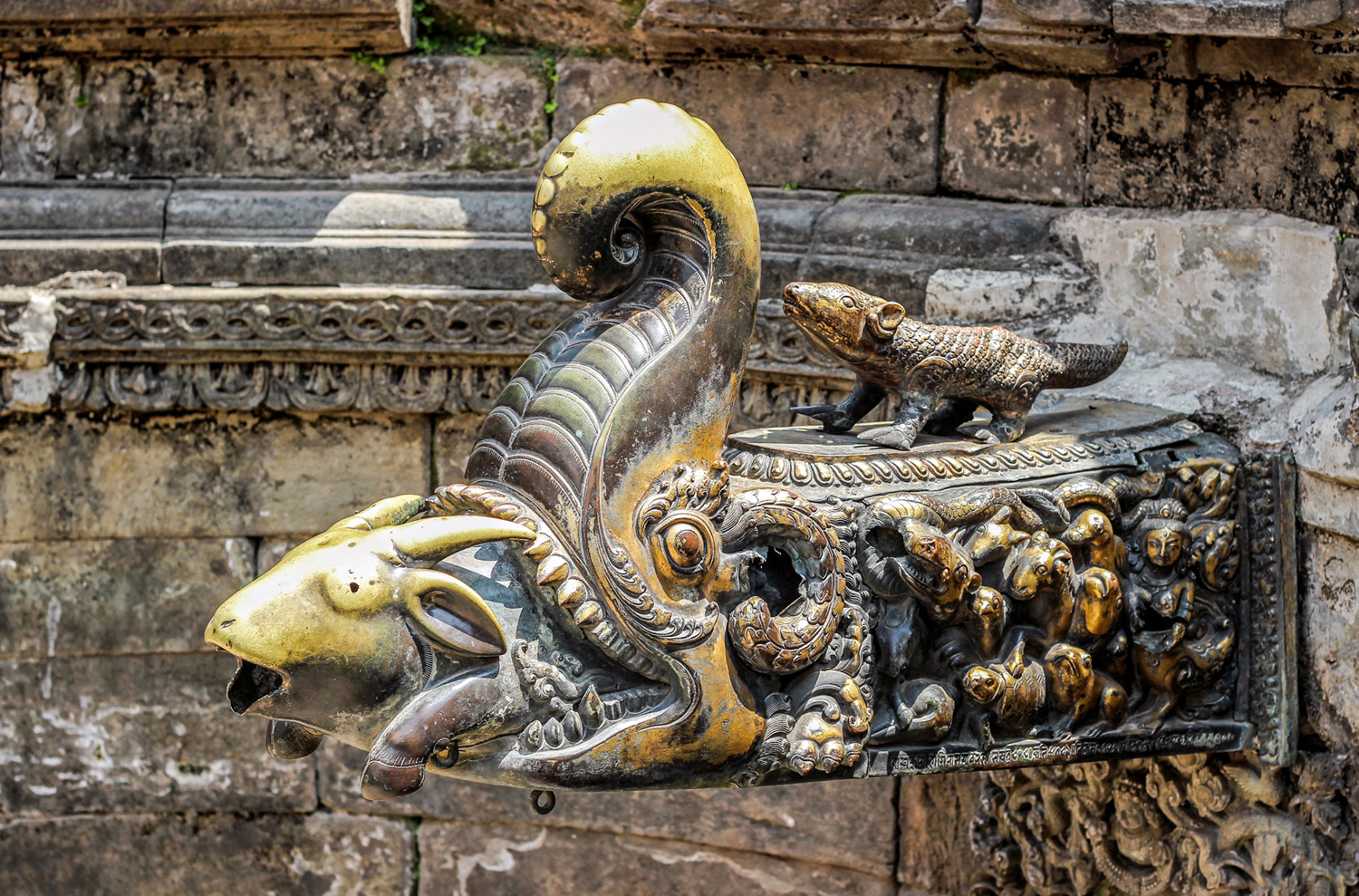
Lichchhavis brought with them one of the most iconic of the many religious and spiritual motifs that adorn the spouts: the crocodile, an animal native to the Ganges river and a symbol of purity. Shutterstock
But the spouts aren’t just a feat of technical engineering, according to Tiwari--they also reflected the cultural values of their architects, particularly those of the Lichchhavi period. Lichchhavis--migrants from the Gangetic plains of India--brought with them one of the most iconic of the many religious and spiritual motifs that adorn the spouts: the crocodile, an animal native to the Ganges river and a symbol of purity. Tiwari said the desire for purity, especially in a caste-dominated society, likely motivated the adoption of the spout system, which delivered a continually refreshed--and therefore untainted--source of water. Even today, the Valley’s stone spouts continue to play an important role in the social and cultural life of communities, most notably Newars. Stone spouts and ponds are at the centre of religious festivals like Sithi Nakha, during which members of the community clean wells and other water bodies in anticipation of the monsoon season. Some spouts, such Washa Hiti in Patan, are considered to carry water with medicinal and tantrik qualities, while others have historical value on par with the most important temples in the Valley. Sundhara, also known as Nuga Hiti, is one such spout, having been commissioned in part by the royal daughter of King Siddhi Narsingha Malla in 1642 AD, a time when providing water to commoners was considered a benevolent act.
It’s this unique marriage of culture and technology that has helped the system survive for so long, said Padma Sunder Joshi, a programme manager at UN-Habitat, who has written two books on the subject. Joshi also credits another iconic feature of Newar culture with keeping the system alive: the guthi, or socio-economic trust, that was once tasked with the management and preservation of spouts and other common resources in the community. “The engineering alone would not have made this,” Joshi said. “It’s part of the tangible and intangible heritage that has continued to this day. And that system is very much responsible for maintaining it.”
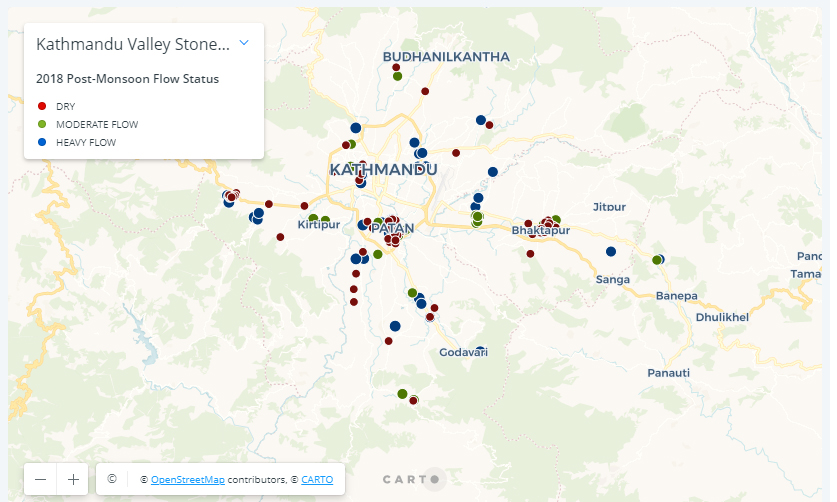
A sampling of Kathmandu Valley’s stone spouts as surveyed by Smartphones4Water Nepal during the 2018 post-monsoon season. For more about the study, including details on how flow rates were measured, see here.
A water issue
The problem today, according to Joshi and others, is that much of this history--and the sense of stewardship that helped preserve it--has been lost amid the Valley’s rapid development and urbanisation. The population of Kathmandu alone has nearly doubled in the last two decades, with many new denizens having migrated from areas far beyond its borders. In many places, this influx has helped to severe the cultural connection local communities once maintained with their spouts.
“People from all over the country have come here who don't understand the value of the spouts,” said Surabhi Upadhyay, a research associate at Smartphones4Water Nepal, an NGO focused on water management issues in the country. “There is a lot of attention over development and modernisation, but the older system has been ignored.”Perhaps more dire are the physical challenges posed by the Valley’s population explosion. In the increasingly dense centres of Kathmandu and Lalitpur, haphazard development has encroached upon the conduits and the system that keeps them flowing. Numerous ponds around the Lagankhel area of Patan, a main source of water for many spouts in the city, have been slowly chipped away at or built over entirely. In Kathmandu’s Thamel, similarly, a historic pond was destroyed last year to make way for The Chhaya Centre, a high-end commercial complex headed by Nepal Investment Bank Chairman Prithivi Bahadur Pande.
Cut off from their sources, many more hitis have been left to languish. In Nagbahal, a relatively wealthy community in Patan’s Ward 6, a centuries-old local hiti remains dry most of the year, which community members attribute to a decrease in the area’s groundwater levels. Just a few-minute’s walk away, right next to Durbar Square, Manga Hiti has also seen its flow greatly reduced in recent years, thanks in part to the obstruction of its canal by nearby development. Built in 570 AD, Manga is thought to be the oldest hitiin the Valley, and thus one of the most popular. “It comes down to lack of vision,” said Bikash Ratna Dhakhwa, a local businessman and secretary of Nagbahal’s community association. “In earlier days, they knew that if they made these canals, the water would fall down for many different ponds. Today, people don’t understand how this works. They didn't bother to look in the past to see how this city was planned.”
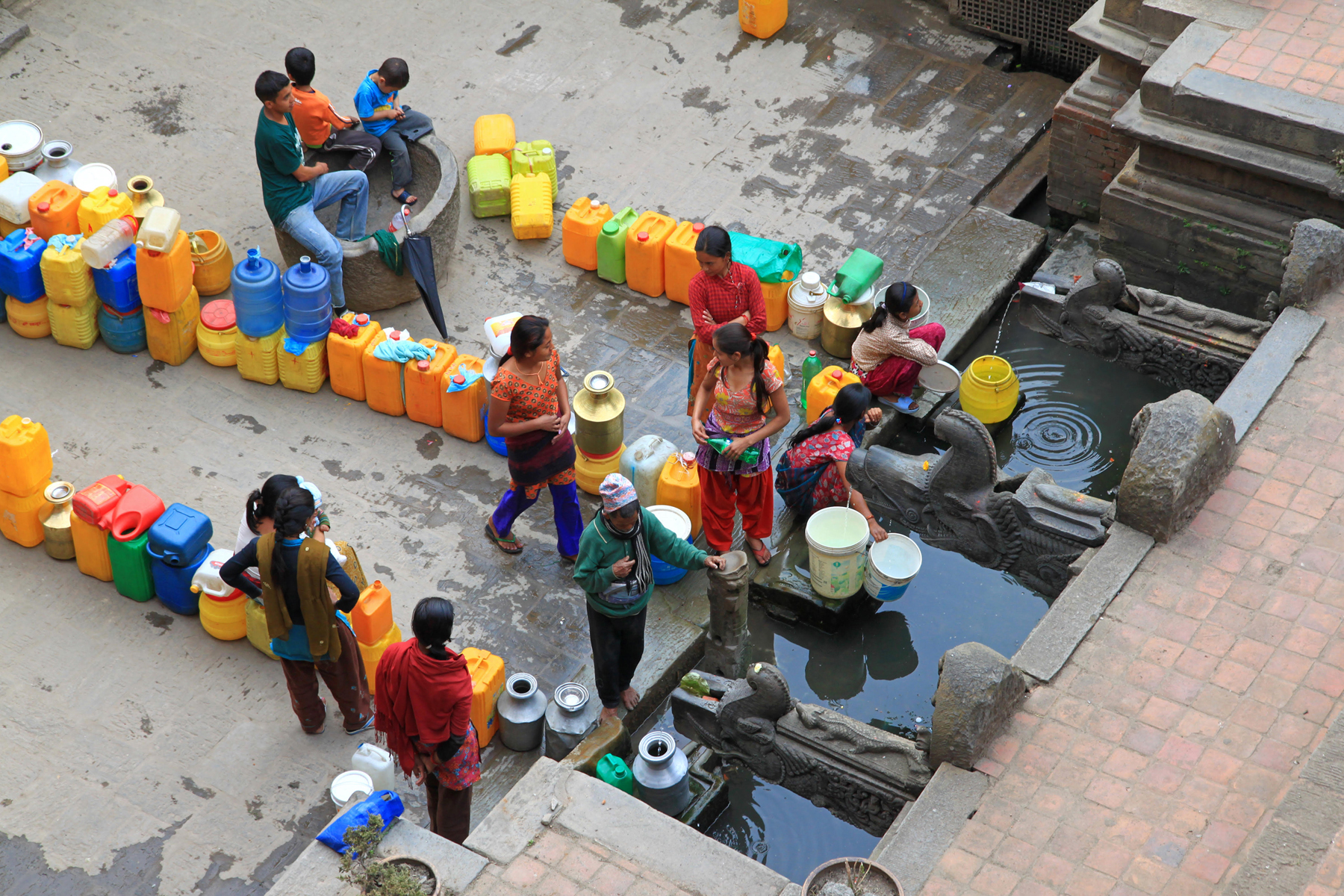
Almost 20 percent of households in the Valley have no access to a local water source, according to the Central Bureau of Statistics, while two-thirds live with inadequate supply. Sasimoto/Shutterstock
In general, experts view the struggles surrounding the stone spouts and ponds as a reflection of the city’s wider water crisis. Almost 20 percent of households in the Valley have no access to a local water source, according to the Central Bureau of Statistics, while two-thirds live with inadequate supply. Demand for water has risen to 360 million litres per day in recent years, but public supply, via a piped network managed by Kathmandu Upatyaka Khanepani Limited, remains between 90 million and 140 million litres per day. The increasing demand has had a particularly devastating effect on groundwater levels in the area, which have plummeted as the Valley's population has expanded. According to the Ground Water Resources Development Board, nearly 50 percent of the population depends on groundwater, whether through KUKL, which supplies half of its water via deep tube wells dug throughout the Valley, or through private wells, which have also proliferated in recent years. This over-extraction is an issue on its own, experts say, but it too is compounded by the Valley’s rapid urbanisation, which is preventing a key step in the precipitation cycle: groundwater recharging.
“In a recharging system, the rain that comes down should be absorbed in the ground, where it is stored. But that’s not happening today,” said Chandra Pandey, assistant professor of development studies at Kathmandu University. “It rains, and because of all the concrete, it doesn’t get absorbed, so it goes from my house to somebody else’s house, and the road becomes a river. And that’s a disaster.” Most observers agree that this groundwater depletion is the main reason so many spouts have dried up. Of the 479 stone spouts that the Kathmandu Valley Water Supply Management Board located in its survey, only 171 were found with running water. And even in the monsoon season, when groundwater levels are at their highest, many spouts are affected. Smartphones4Water Nepal, which has been employing a small army of citizen scientists to measure flow rates at spouts throughout the Valley over the last two years, found in its last survey that over three-quarters of hitis were seasonally dry, while nearly half were completely dry.
And the Valley’s overdevelopment hasn’t only degraded water levels either. The Kathmandu Valley Water Supply Management Board also found that nearly 100 percent of hitis surveyed were tainted with E. coli, rendering spout water undrinkable in most places. Joshi, who has conducted similar surveys in the past, said the problem is part of a wider struggle over limited resources in the urban environment— and one that’s likely to get worse in the coming years. “The city always has a fight for resources,” he said. “And this is another fight for resources. Do we want to share water or do we want to grab it? That is the tussle.”
Sundhara is testament to this conflict. When the fountains’ flow slowed to a trickle almost a decade ago, community leaders investigated and determined that private wells at the nearby Patan Industrial Estate, which sits on the same underground aquifer, were to blame. They protested, destroying many of the wells and later striking an agreement with the company that would limit its use of groundwater. For a few years, the flow at Sundhara resumed, Shrestha said, but it didn’t last long. “They took the water from the wells to use for the factories,” he said. “We tried to fight with the owners, but they didn’t listen.”
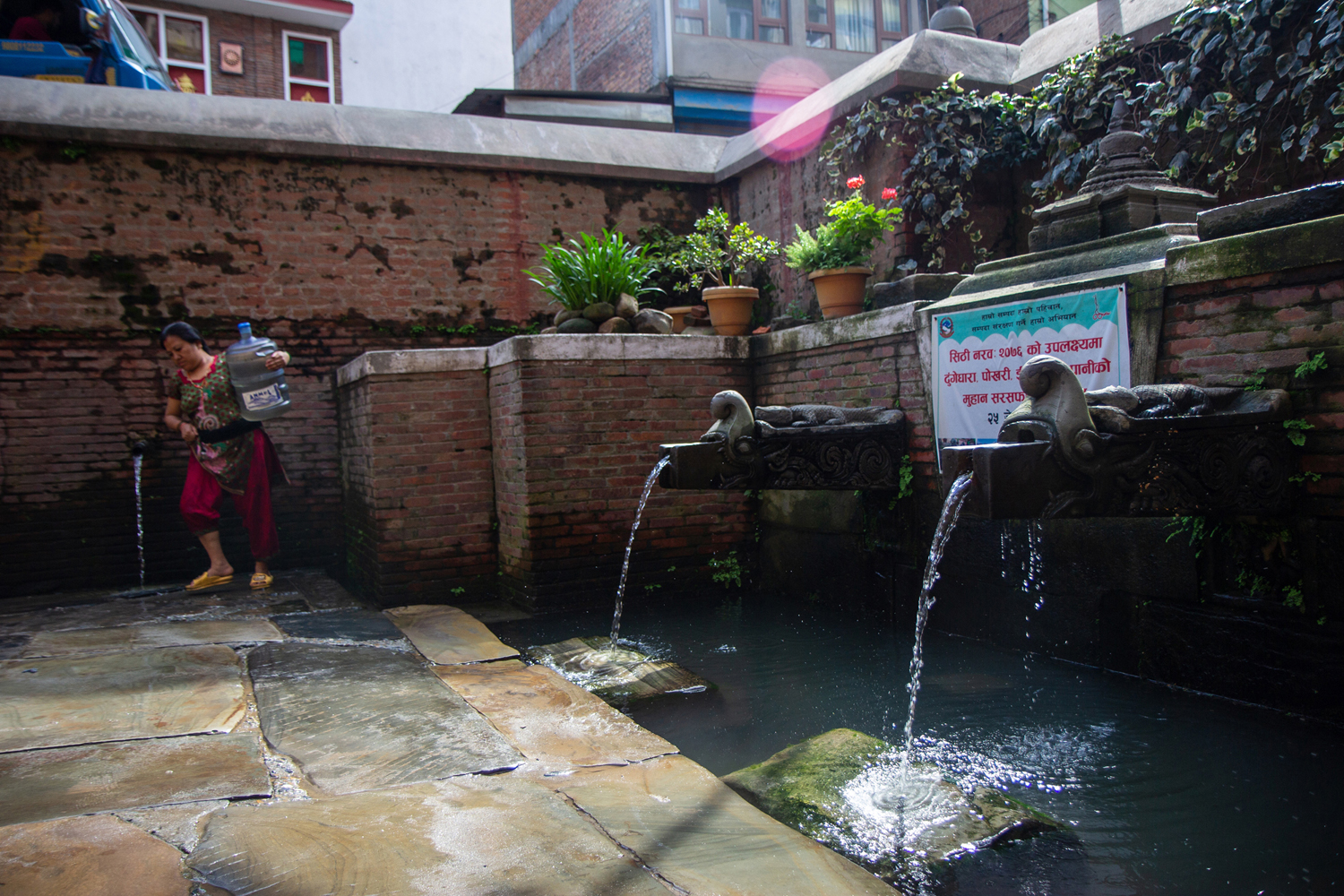
Many spouts are heavily dependent on groundwater, which can vary from season to season. Thapa Hiti, in Patan, runs strong during the monsoon. Chase Brush/TKP
Replenishing hitis
Water conservations and heritage activists argue there are several strategies for protecting the Valley’s hitis against future destruction. One, naturally, involves better managing the area’s natural water resources, and particularly its groundwater table. Several NGOs and government organisations have highlighted the need to raise the table through rainwater recycling and recharging programmes, which involve encouraging residents to capture rainwater to use for their day-to-day activities or to collect it in specially dug pits where it can find its way back into the ground.
“My wish is that everyone would collect their rainwater and try to use it. And if not, put it back in the ground, using recharge pits,” said CUID’s Shrestha, who estimated that such a policy could significantly raise groundwater levels within five years and replenish up to 60 percent of the Valley’s spouts. Another key solution lies in water supply initiatives like Melamchi, which can help lessen the burden placed on groundwater by offering an alternative source from outside the city. Using snowmelt from Langtang National Park to the north, Melamchi, now almost two decades in the making, is expected to provide the Valley with over 170 million litres of drinking water per day during its first phase, as well as another 360 million litres during a future second phase.
Neither of these solutions, however, has yet to produce any real results. While most cities in the Valley have already passed policies encouraging rainwater harvesting and recharging, none have made it mandatory, and so, have ultimately had little impact on changing residents’ habits, critics say. And the first phase of the Melamchi project, though nearing completion, continues to be plagued by setbacks, leaving many water-challenged communities in limbo. “They have already laid the pipe throughout our neighbourhood,” said Shrestha, who added that access to affordable, drinkable water is the number one issue now facing residents there. “But when the water will come, nobody knows.”
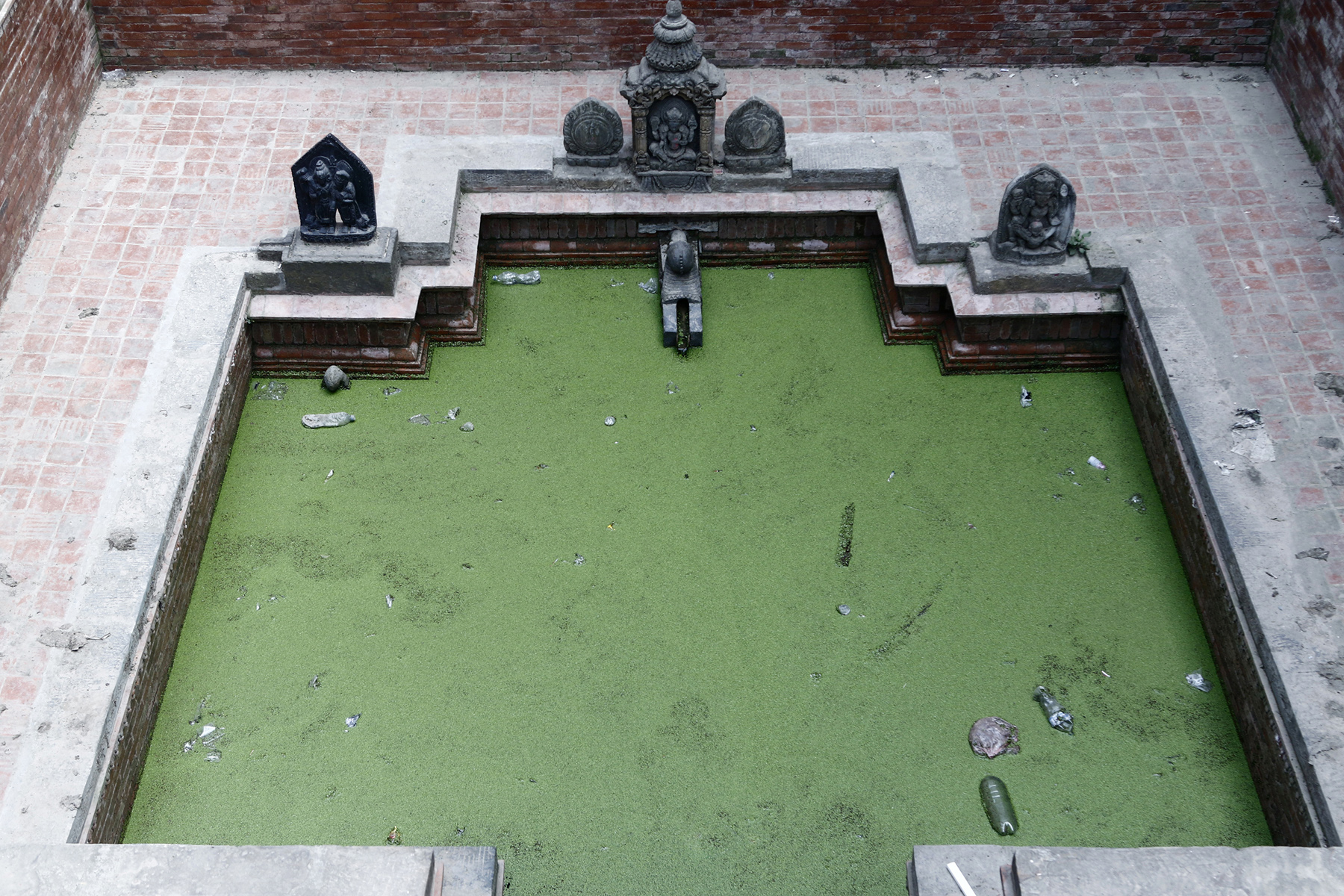
Despite the cultural relevance these water spouts once held, many, like the Chhyabaha Hiti in Lalitpur, have been neglected ever since their water flow dried up. Keshav Thapa/TKP
The second angle of approach to saving the spouts would be to focus on heritage preservation, but that too has proven difficult. While both Kathmandu and Lalitpur have expressed commitment to conserving the spouts and their sources, in practice, their efforts have fallen short, critics say. Specifically, there’s been little focus on protecting the system’s physical infrastructure, including the ponds and canals, from encroachment by private development. “Many conservation efforts are aimed at preserving the face of the spouts,” said CUID’s Shrestha. “But unless you have water coming out of the spouts, there’s no meaning behind them.”
Chandra Subas Shakya, senior architect in the Lalitpur municipal government, said the office is doing the best it can with the resources at its disposal. The city has devoted funds to refurbish the appearance of many spouts in the area, as well as to identifying and posting their traditional names on plaques at each location. It also runs annual awareness programmes for residents, both on stone spout preservation and groundwater recharging. “The main thing is that people must be aware,” said Shakya. “If a homeowner finds a canal when they build a new building, they are supposed to notify the government. But many don’t, and it is very difficult to monitor. So that is a challenge.”
One thing that’s certain is that preserving the Valley’s ancient water management system is itself an essential component in addressing its overall water woes, experts say. That’s particularly true when it comes to maintaining water access for low-income households, since stone spouts represent an affordable alternative to other sources of privately-supplied water. Many residents who continue to rely on spouts today tend to be renters who may not have access to reliable tap water and cannot afford to buy water from private tankers and wells, for example. “When these cities were formed, you had about a few hundred thousand people living here,” said Joshi. “Now the population is over four million, so you definitely need additional water. But having said that, the first thing would be to utilise the water that we have efficiently, before jumping into other resources.”
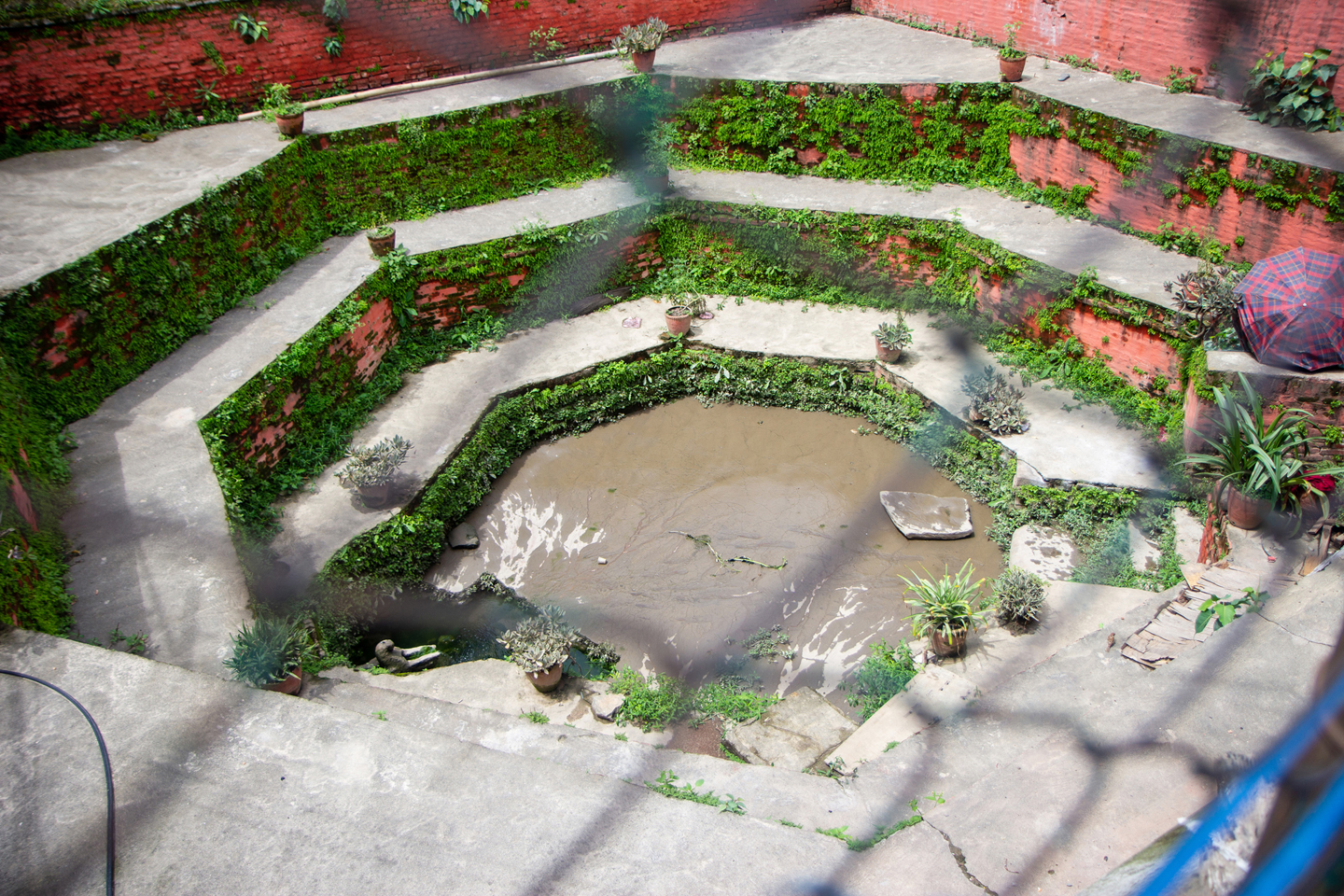
Changing tides
Still, even in the face of these and other challenges, there are signs of hope for the future of the Valley’s stone spouts, conservationists say. Much of that hope is embodied in community-driven initiatives, as an increasing number of concerned residents take it upon themselves to protect and preserve their local water sources. In Nagbahal, for instance, community members pooled their resources to install a 200-feet-deep well and purification system when their local hiti began to dry up, which in addition to rainwater recharging has helped alleviate water scarcity in the area.
Another example of this kind of local self-sufficiency is in Ikhachhen’s Alko Hiti, one of the oldest continuously discharging spouts in Patan. For over a decade now, the Ikhachhen community has spearheaded a distribution programme that involves collecting the spout’s water during the night and giving it out to residents throughout the day. Even as the hiti’s flow has slowed over the years, the programme continues to supply some 200 residents around the neighborhood with up to 300 litres of water a day, according to local leaders.
Source: The Kathmandu Post 17th August, 2019